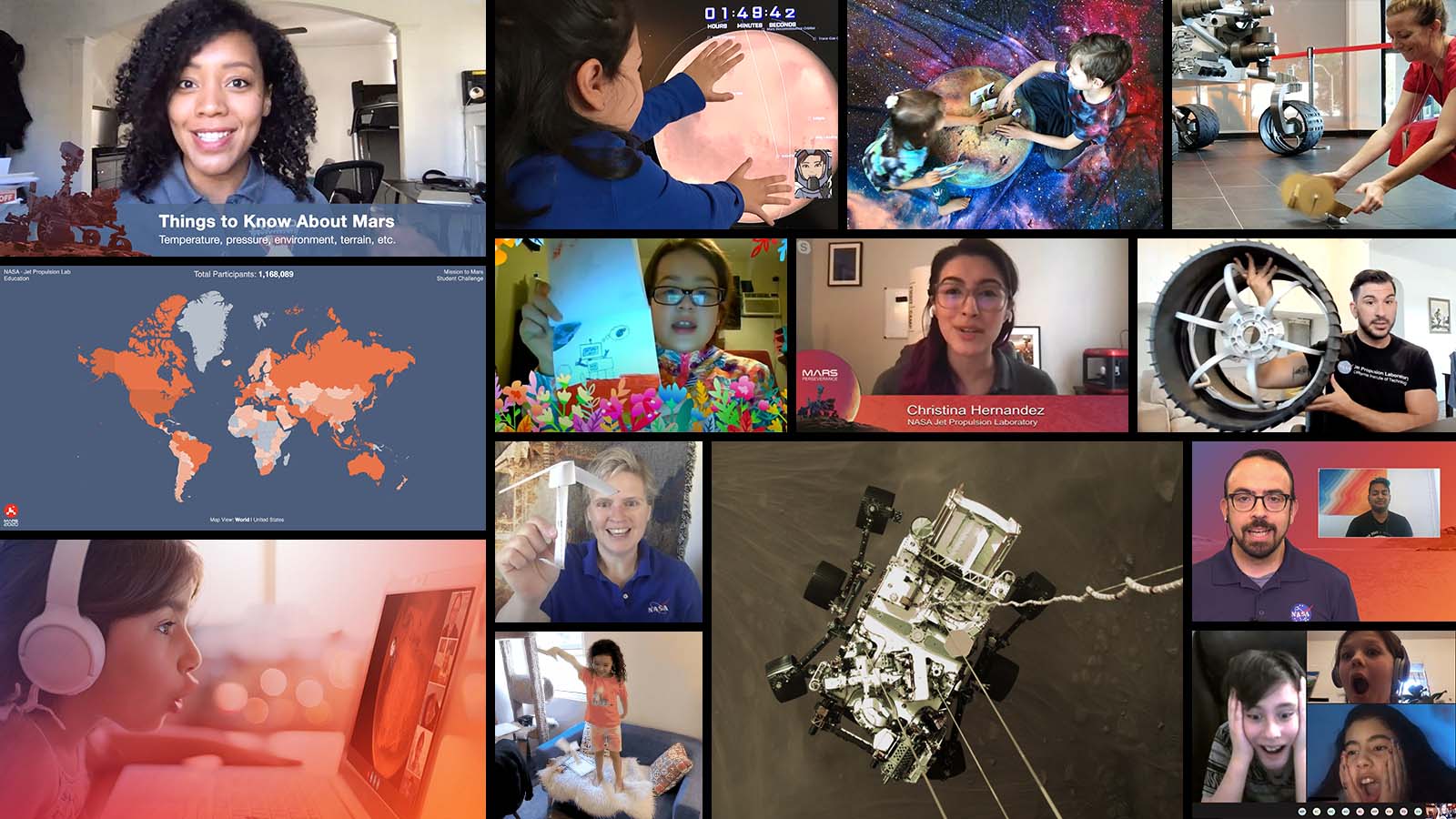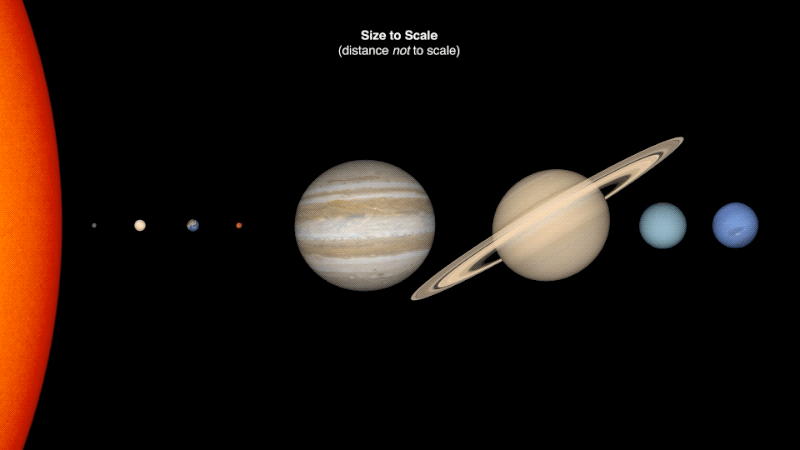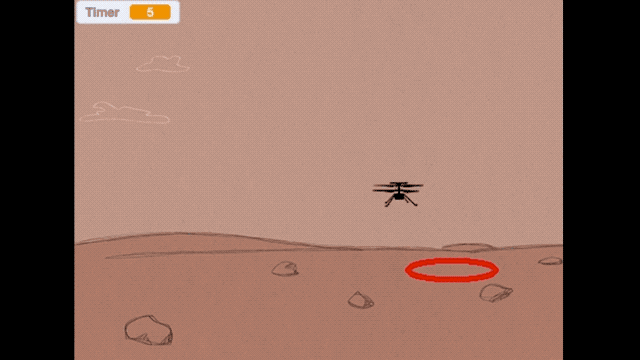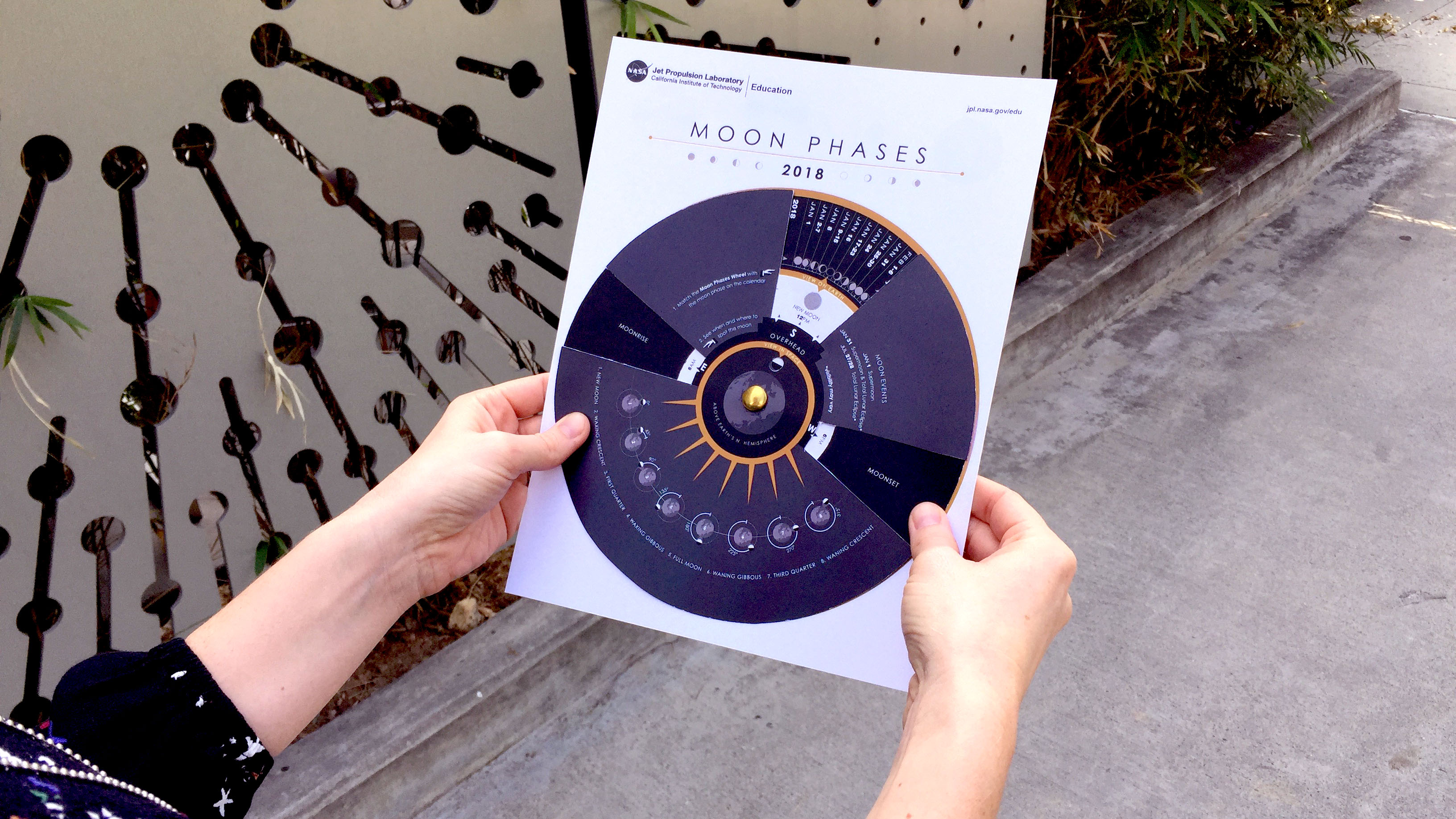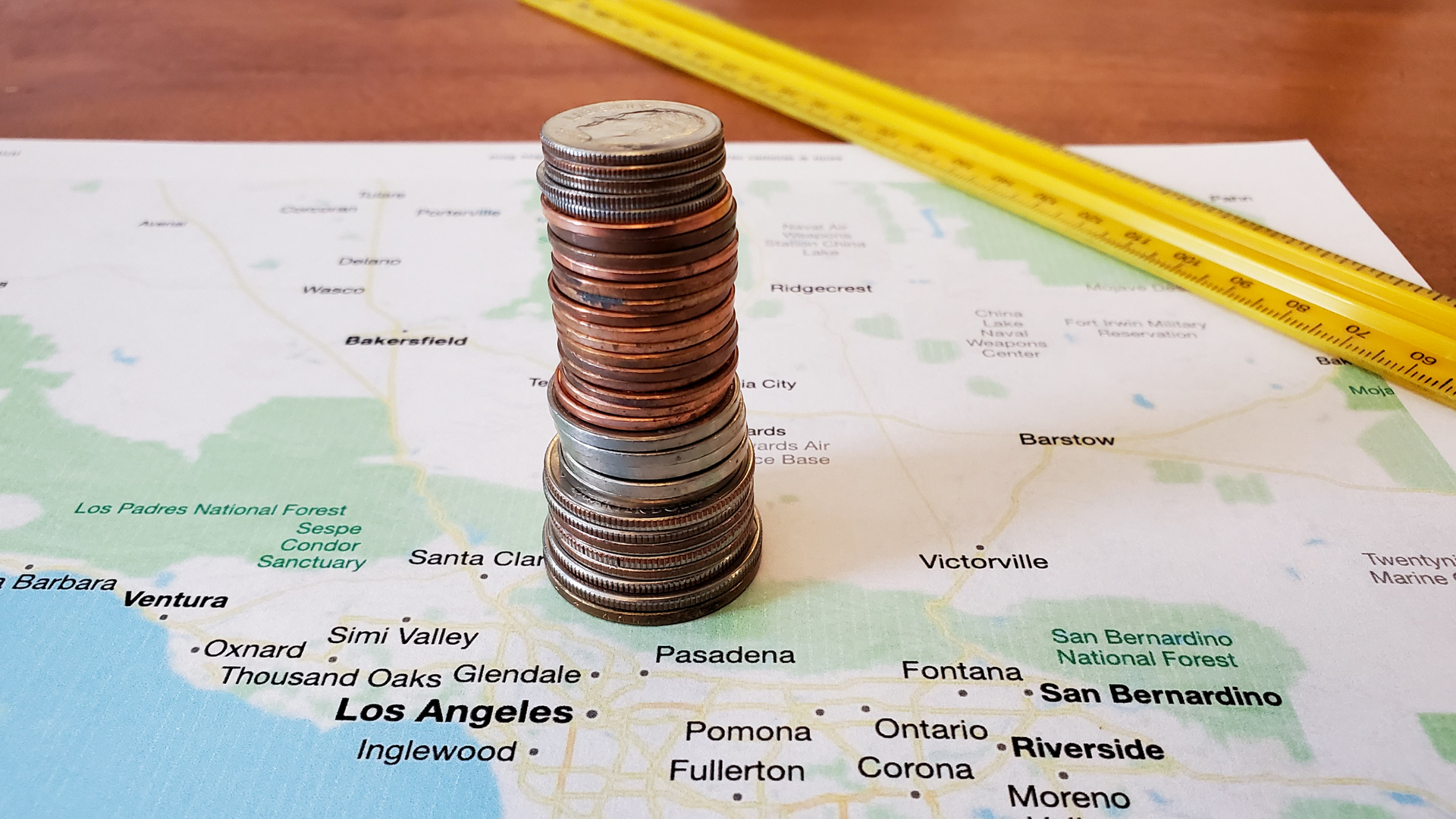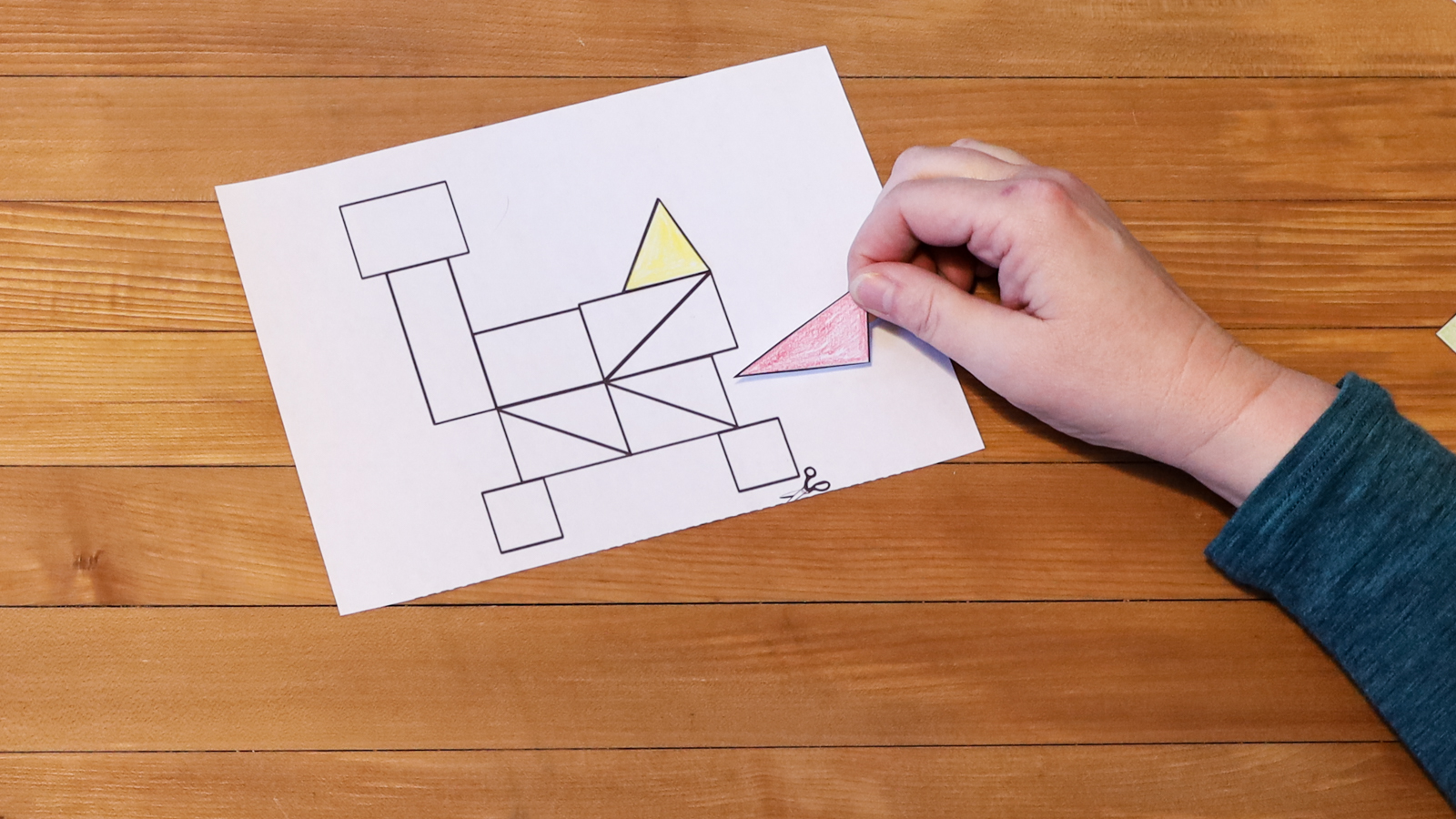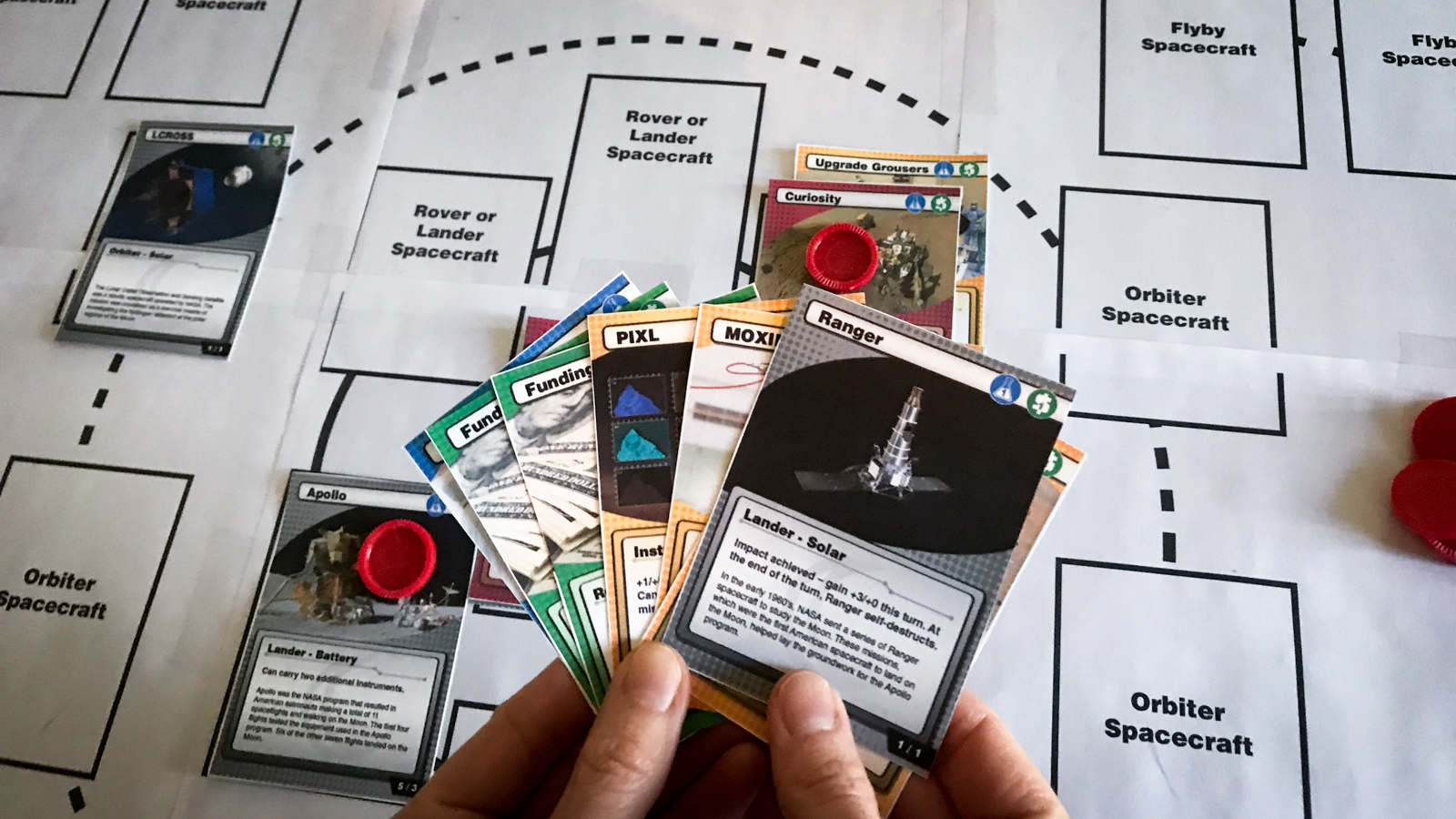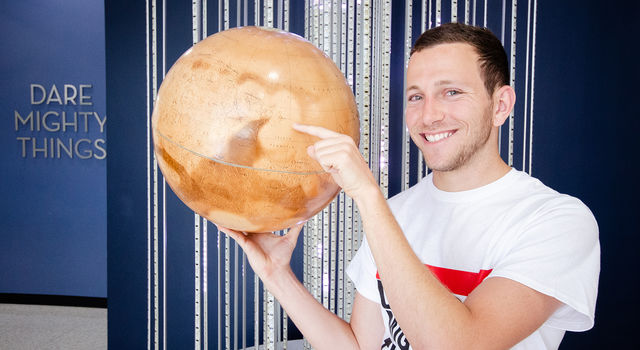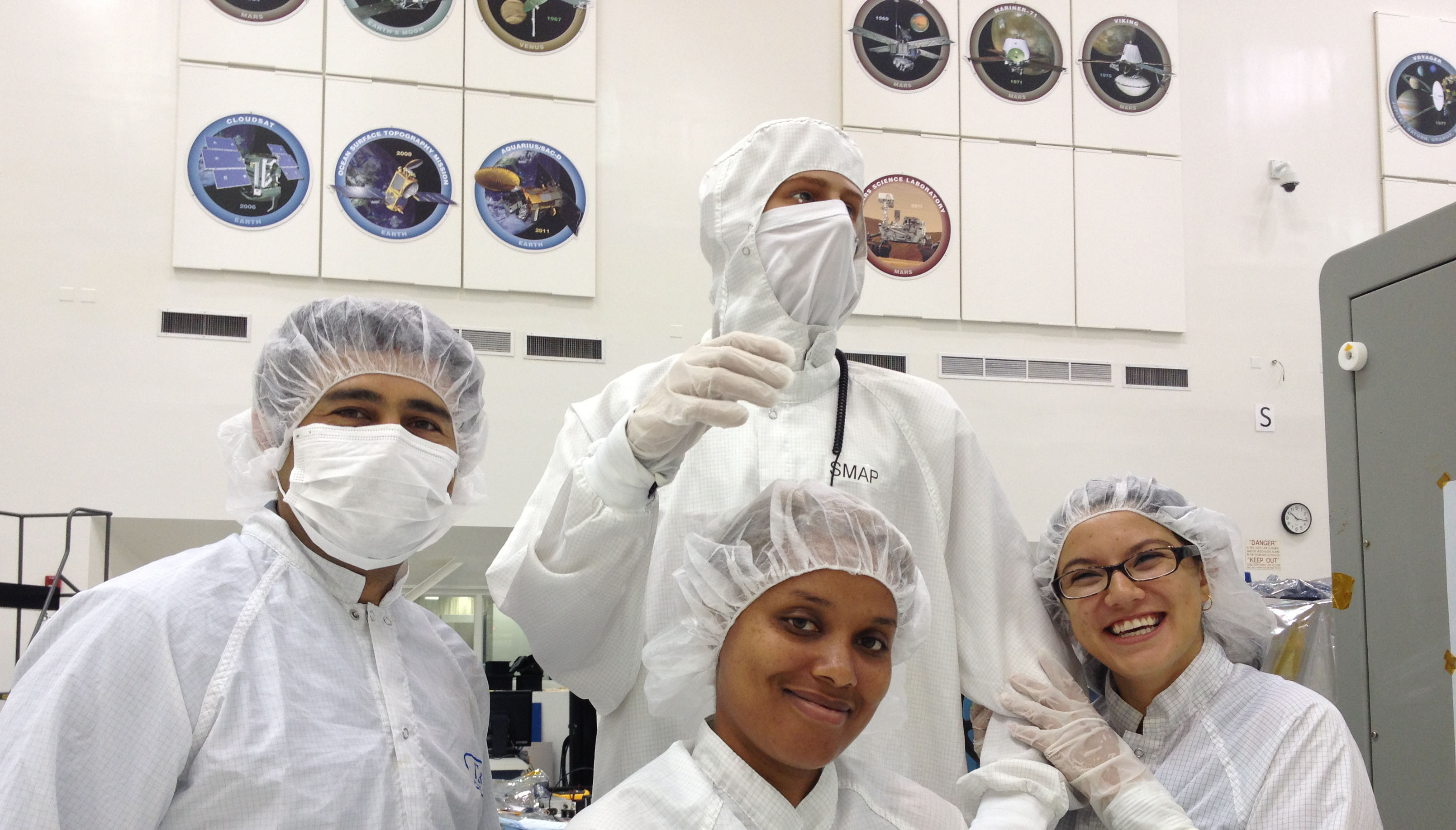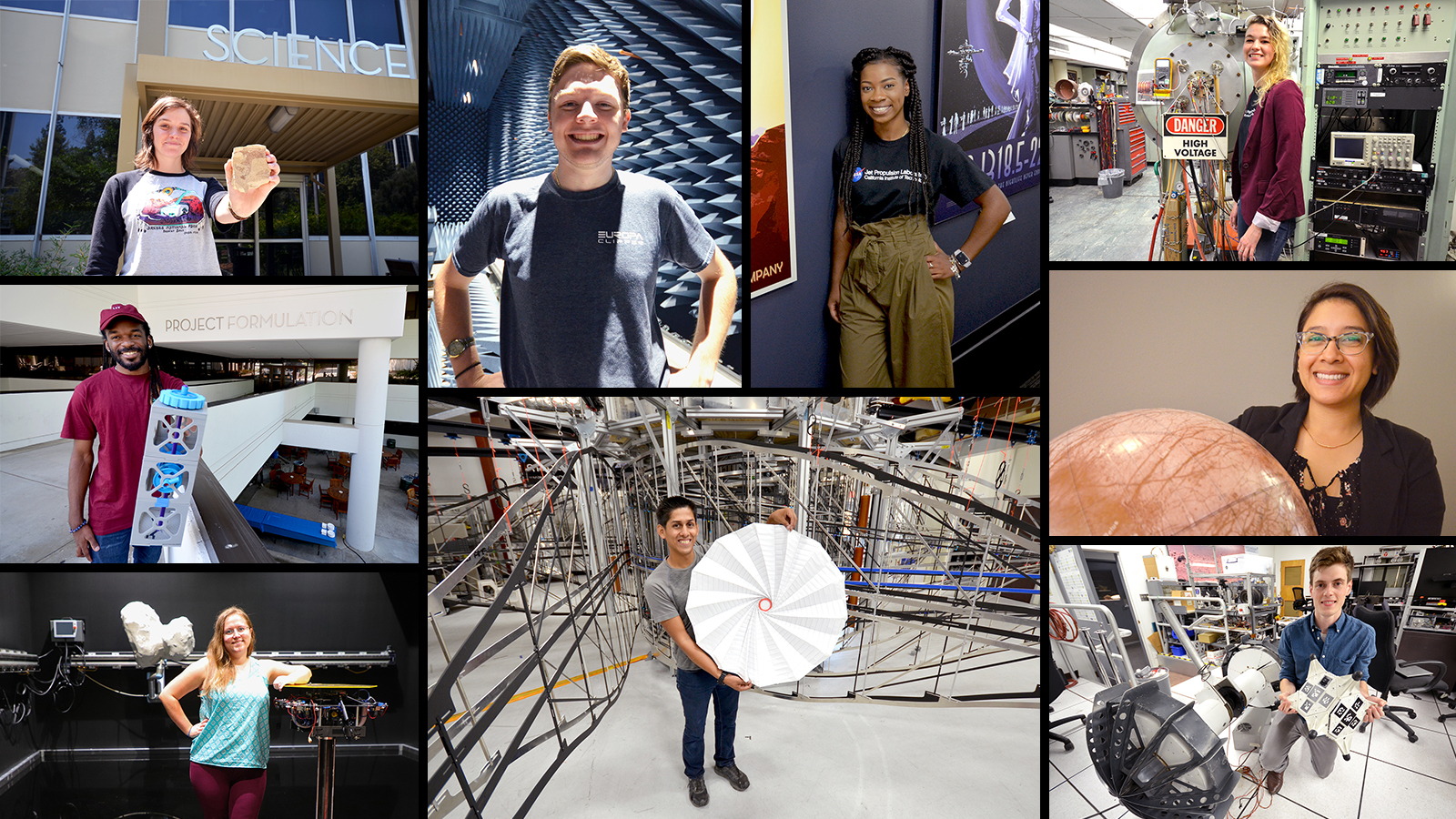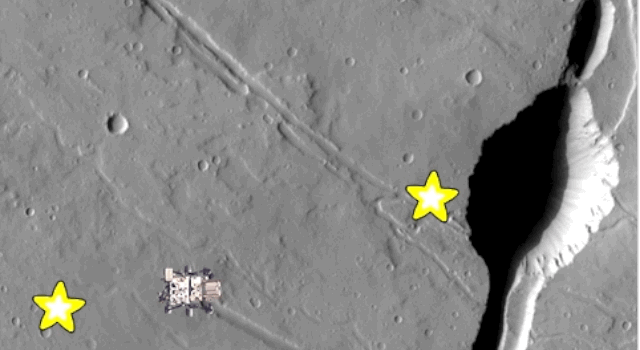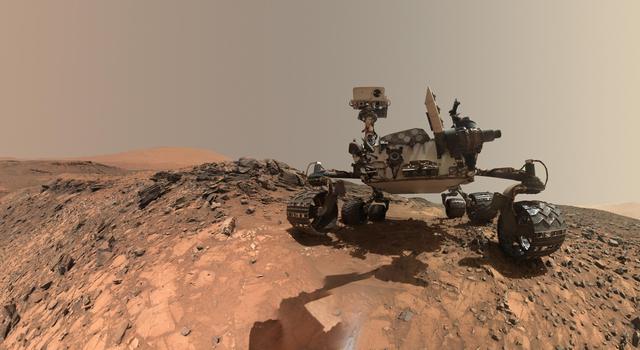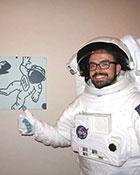Edu News | December 6, 2021
The Best New STEM Education Resources from NASA-JPL in 2021
In 2021, we added nearly 80 STEM education resources to our online catalog of lessons, activities, articles, and videos for educators, students, and families. The resources feature NASA's latest missions exploring Earth, the Moon, Mars, asteroids, the Solar System and the universe beyond. Here are the 10 resources our audiences visited most this year.
NASA's Mission to Mars Student Challenge
To kick off the year, we invited students, educators, and families from around the world to create their own mission to Mars as we counted down to the Perseverance rover's epic landing on the Red Planet in February. More than one million students participated in the Mission to Mars Student Challenge, which features seven weeks of guided education plans, student projects, and expert talks and interviews highlighting each phase of a real Mars mission.
It's no surprise that this was our most popular product of the year. And good news: It's still available and timely! With Perseverance actively exploring Mars and making new discoveries all the time, the challenge offers ongoing opportunities to get students engaged in real-world STEM.
Need a primer on the Perseverance Mars rover mission, first? This article from our Teachable Moments series has you covered.
Solar System Size and Distance
This video offers a short and simple answer to two of students' most enduring questions: How do the sizes of planets compare and how far is it between them? Plus, it gets at why we don't often (or ever) see images that show all the planets' sizes and distances to scale. Spoiler alert: It's pretty much impossible to do.
Get students exploring solar system size and distance in more detail and even making their own scale models with this student project.
Code a Mars Helicopter Video Game
As you'll soon see from the rest of this list, coding projects were a big draw this year. This one took off along with Ingenuity, the first helicopter designed to fly on Mars, which made its historic first flight in April. Designed as a test of technology that could be used on future missions, Ingenuity was only slated for a few flights, but it has far exceeded even that lofty goal.
In this project, students use the free visual programming language Scratch to create a game inspired by the helicopter-that-could.
Make a Moon Phases Calendar and Calculator
Just updated for 2022, this project is part educational activity and part art for your walls. Students learn about moon phases to complete this interactive calendar, which shows when and where to see moon phases throughout the year, plus lists moon events such as lunar eclipses and supermoons. The art-deco inspired design might just have you wanting to make one for yourself, too.
The NASA Pi Day Challenge
This year marked the eighth installment of our annual Pi Day Challenge, a set of illustrated math problems featuring pi (of course) and NASA missions and science. Don't let the name fool you – these problems are fun to solve year round.
Students can choose from 32 different problems that will develop their math skills while they take on some of the same challenges faced by NASA scientists and engineers. New this year are puzzlers featuring the OSIRIS-REx asteroid mission, Mars helicopter, Deep Space Network, and aurora science.
Educator guides for each problem and problem set are also available here. And don't miss the downloadable posters and virtual meeting backgrounds.
Code a Mars Sample Collection Video Game
Another coding challenge using the visual programming language Scratch, this project is inspired by the Perseverance Mars rover mission, which is collecting samples that could be brought back to Earth by a potential future mission.
While developing a gamified version of the process, students are introduced to some of the considerations scientists and engineers have to make when collecting samples on Mars.
Code a Mars Landing
As if launching a rover to Mars wasn't hard enough, you still have to land when you get there. And that means using a complex series of devices – from parachutes to jet packs to bungee cords – and maneuvers that have to be performed remotely using instructions programmed into the spacecraft's computer.
Students who are ready to take their programming skills to the next level can get an idea of what it takes in this project, which has them use Python and microcontrollers to simulate the process of landing a rover on Mars.
How Far Away is Space?
Without giving the answer away: It's not as far as you might think.
In this activity, students stack coins (or other objects) on a map of their local area as a scale model of the distance to space. The stacking continues to the International Space Station, the Moon, and finally to the future orbit of the James Webb Space Telescope, which is slated to launch on Dec. 22.
Build a Rover and More With Shapes
You don't have to be a big kid to start learning about space exploration. This activity, which is designed for kids in kindergarten through second grade, has learners use geometric shapes called tangrams to fill in a Mars rover design. It provides an introduction to geometry and thinking spatially.
Once kids become experts at building rovers, have them try building rockets.
Space Voyagers: The Game
Technically a classroom activity (it is standards-aligned, after all), this game will appeal to students and strategy card game enthusiasts alike. Download and print out a set for your classroom (or your next game night).
Players work collaboratively to explore destinations including the Moon, Mars, Jupiter and Jupiter's Moon Europa with actual NASA spacecraft and science instruments while working to overcome realistic challenges at their destination including dust storms and instrument failures.
TAGS: K-12, Lessons, Activities, Education Resources, Teachers, Students, Families, Kids, Learning, STEM, Science, Engineering, Technology, Math, Coding, Programming, Mars, Solar System, Moon
Meet JPL Interns | November 14, 2019
Writing Brain Teasers for NASA's Next Mars Rover
There's no joystick for driving rovers on Mars. Instead, a team of scientists and engineers gathers every day to plan each move and then beams a series of instructions to the rover's computerized brain, like interplanetary telepathy. As the only tether between the rover and the mission team on Earth, the onboard computer needs to run flawlessly. So before the rover even leaves Earth, its brain is put to the test. That's where Miles Fertel came in this past summer. As an intern with the rover simulation and planning team at NASA's Jet Propulsion Laboratory, Fertel was tasked with writing a program that tests how well the agency's next Mars rover interprets the instructions it receives. The trick, he said, was outsmarting not the rover but the humans who programmed it. We caught up with the Harvard University computer science student to learn more about his internship with the Mars 2020 team and to hear what he considered the most unique experience of his summer at JPL.
What are you working on at JPL?
I'm working on software for the Mars 2020 rover – so the code and tools that allow the rover to function on Mars. My team is rover simulation and planning. The rover planners are the people who take in all the information from the scientists and the rover and write commands to send to the rover through the Deep Space Network, which is basically the internet for space. As the simulation team, we make sure that the commands that we're going to send are going to be effective and that they're going to be safe so that this rover we send to Mars after all this painstaking work isn't going to get stuck in a hole or break because of a wrong command.
What is your average day like on your project?
I work on creating tests that humans couldn't come up with. The average testing for software is you write tests to make sure that the code isn't going to fail when you add in certain instructions. But humans – specifically the humans who write the tests – tend to be the same people who write the code. They're not going to be able to come up with as good of a test, because if they knew what was going to break, they wouldn't have written the bug in the first place.
What I do is use a couple of testing frameworks that use generational input adjustments. They develop in an evolutionary way, starting from a simple input that I put in. So, say we're working on commands for the rover. We can start with, "Go forward," and then the system will modify the instructions based on a dictionary of information I provide. So I say, "These are words that might make sense to the rover. Try coming up with combinations of these that might result in behavior that we haven't seen before." If that behavior is defined, then everything's fine, but if it's going to cause a problem, then it's important that we know that so we can update the code.
What are you studying in school, and what got you interested in that field?
I study computer science at Harvard. I hadn't done any programming before coming to college. I thought I wanted to do something in the area of technology and possibly business, but I didn't really know. So I took the intro to computer science class, and I really loved it. I loved the challenge of feeling like my homework was a puzzle and not a chore. That drew me to it, and I started taking all the classes that I could in that realm.
What is your ultimate career goal?
I don't think anyone should have an ultimate career goal. I think careers should be a fluid thing and that people should build up skills that allow them to do the things that are most interesting to them. Right now, my goal is making sure that the Mars 2020 rover lands on Mars and everything goes swimmingly when it gets there. But, ultimately, I want to work on cool things with interesting people.
How do you feel that you're contributing to Mars 2020 and making the mission a success?
When I came here, my main goal was having a tangible impact on the project. I wanted something where every minute I spent working would be important to meeting the goal of the project. I find bugs every day, and I fix them, and that's great. Hopefully, before the summer's over, I will have a patch that I can write for the software that will end up on the rover.
What brought you to JPL for this internship?
I had a friend who interned here two years ago, and he recommended it really highly, saying he had a terrific time and his team members were great. I applied online, but when you apply, it's a general application and you could be picked for any project based on your set of skills.
I knew that I wanted to work on Mars 2020, so I went on the JPL website, and I researched teams and people working on robotic software for the mission. I emailed Jeng Yen, my group supervisor. I said, "Here's my resume. This is what I'm interested in. Are there any projects that I could work on?" He said, "One of my team members, Steven Myint, is working on something that fits your profile pretty well. You should talk to him." So I talked to him, and the rest is history.
That's great. That's something we recommend students do if there's a particular project or area of research they're interested in. What is the most unique JPL or NASA experience that you've had while you've been here?
Oh, easy. One of my team members, Trevor Reed, is a rover planner for Curiosity. Every morning the team has a tactical meeting in which they go over the schedule for the day for the rover, and they give instructions to the rover planners who will write the commands that tell the rover what to do. When I found out that one of my teammates drives the Curiosity rover, I was like, "Can I please, please shadow you for that process?"
So I showed up at 8 o'clock in the morning in the Curiosity rover tactical office, or conference room, and there's the head scientist, Ashwin Vasavada, who I'd read about in articles. I watched them send the actual commands to the rover. I learned all about the planning and tolerances that are involved in the simulations that we do. I got to see the software that I'm working on in action, because it's also used for Curiosity. It was a pretty amazing experience to sit there for a couple of hours and watch them go through the entire process of a day on Mars.
Now for a fun question: If you could play any role in NASA's plans to send humans back to the Moon or on to Mars, what would you want to do?
Every kid wants to be an astronaut, right? I mean, if you're offering … As much as I would love to be an astronaut, my interests in the short term are contributing to and building projects that I think are important. So for those future missions, I think I would want to have more input on the design, the structure and the planning, overall. So maybe I would want to be a systems engineer or even work on the design.
This Q&A is part of an ongoing series telling the story of what it takes to design, build, land, and operate a rover on Mars, told from the perspective of students interning with NASA's Perseverance Mars rover mission. › Read more from the series
The laboratory’s STEM internship and fellowship programs are managed by the JPL Education Office. Extending the NASA Office of STEM Engagement’s reach, JPL Education seeks to create the next generation of scientists, engineers, technologists and space explorers by supporting educators and bringing the excitement of NASA missions and science to learners of all ages.
Career opportunities in STEM and beyond can be found online at jpl.jobs. Learn more about careers and life at JPL on LinkedIn and by following @nasajplcareers on Instagram.
TAGS: Higher Education, Internships, STEM, Engineering, Interns, College, Robotics, Mars, Rover, Mars 2020, Software, Computer Science, Programming, Coding, Mars 2020 Interns, Perseverance
Edu News | December 5, 2017
Create a Mars Exploration Game for Computer Science Education Week
Try this lesson from NASA/JPL Edu to get involved and bring the excitement of NASA Mars exploration to students:





